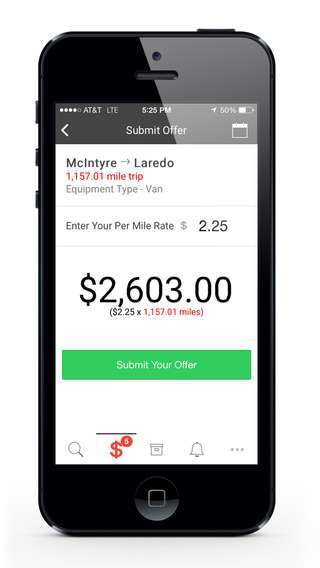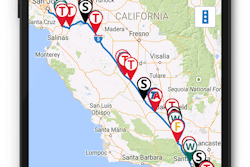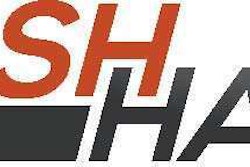Find the previous part in this series on the so-called “Uberization of trucking” via this link.
Access all of the component parts via the page at this link.


He built the Keychain platform to “show people the theory of what could be the future of trucking,” Kulp says, calling the platform “one central access point to manage their money and manage their gig. They don’t have to go to a forum to wonder about the broker anymore – we can make safety guarantees with people using our software.”
Early 2013 saw the first, simple load-board version of the app, with call buttons in-app to connect to brokers handling the loads. Last summer, Keychain began to approach shippers to bring more direct freight into the system. He describes the pitch this way: “We started telling them, ‘We have thousands of drivers, we’re building features that will continue their searching for loads, but rather than calling brokers, they can be connecting directly to you. You don’t have to negotiate with the carriers. We’ll handle the paperwork, direct deposit payment, we have GPS tracking enabled’ and such.”

By the end of three weeks, they were in various points of conversation with more shippers than they could handle. “We had to tone it down,” Kulp says, “because we still needed more independents using the app to provide capacity.”
The shipper side today is an invite-only platform, he adds, and the company is adding freight into the system as fast as it can. Meanwhile, 10,000 drivers use the app to search loads to connect with exterior brokers or internal shippers. Only 10-20 new daily active movements of shippers’ freight are happening today.
Rate/pricing methodology for shippers’ loads has “changed a couple times,” Kulp says. In February, Keychain made an update to where now, when a shipper creates a load on the website, they type in their max offer. On driver side, all they see is the opportunity, and they get to submit an offer on their own. If the driver’s offer is less than the max offer, it will automatically select the load. The driver will get then get all the details and shipper will have access to the driver’s GPS location” to confirm pickup and, ultimately, delivery.
“If the driver’s offer is above” the shipper’s maximum, says Kulp, “we then let the shipper know within the app that there’s a driver offer a little above. They can utilize tools within the app” to adjust pricing depending on how many counter-offers they’ve gotten.
Drivers can advertise their availability in advance, Kulp says, and aside from Keychain’s 2-3 percent transaction fee to cover credit card company charges, “we have a real margin that’s between 6 and 12 percent.”
NEXT: Trucker Path hopes technology will improve trucking appeal to next-generation haulers












